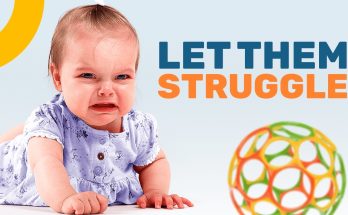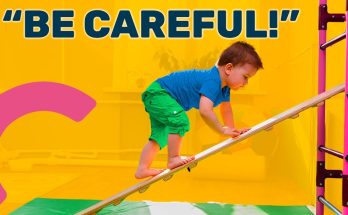At two months old, your baby is growing and developing rapidly. This period is filled with exciting milestones as they become more aware of their surroundings and begin to interact with the world in new ways. While each baby is unique and may reach milestones at their own pace, there are some typical developmental changes to look out for in your two-month-old.
Physical Development
1. Improved Head Control
At two months, babies start gaining better control over their neck muscles. While they may still need support, they can briefly hold their head up when placed on their tummy. Tummy time helps strengthen their neck, shoulders, and upper body muscles, which are essential for future motor skills like rolling over and sitting up.
2. Reflexes and Movements
Babies at this age still exhibit reflexive movements, but they also begin to show more purposeful motions. The Moro reflex (startle reflex) and rooting reflex are still present but gradually fade as they gain voluntary control over their limbs. You may notice your baby making smoother movements with their arms and legs as their nervous system develops.
3. Increased Strength and Activity
Two-month-old babies become more active, frequently stretching and kicking their legs. They may also start making attempts to push up during tummy time, which helps build the necessary muscles for rolling and crawling in the future.
Sensory Development
4. Improved Vision and Focus
At birth, a baby’s vision is quite blurry, but by two months, their ability to focus improves significantly. They can now track moving objects with their eyes and recognize familiar faces. Babies enjoy looking at high-contrast patterns and brightly colored objects. They may even begin following your face as you move around.
5. Enhanced Hearing and Response to Sounds
By two months, your baby’s hearing has developed further, and they will start responding more actively to sounds. They may turn their head toward voices or other noises and show preference for familiar sounds, like their parents’ voices. Musical toys or gentle singing can capture their attention and soothe them.
6. Developing Sense of Touch
Babies explore the world through touch. At this stage, they enjoy grasping objects, feeling different textures, and bringing their hands to their mouth. Offering soft toys and different materials can help stimulate their sense of touch.
Cognitive Development
7. Beginning of Social Smiling
One of the most heartwarming milestones at two months is the first genuine social smile. Unlike the reflexive smiles seen in newborns, these smiles occur in response to interactions and are a sign of social and emotional development. Smiling back at your baby and engaging in eye contact can encourage more frequent smiles.
8. Early Communication and Cooing
At this stage, babies begin making cooing sounds, which are the first steps in language development. These soft “ooh” and “ahh” sounds indicate that your baby is starting to experiment with their vocal cords. Talking and singing to your baby can help develop their language skills.
9. Recognizing Caregivers
Your baby is beginning to recognize their primary caregivers and will show preference for familiar faces and voices. They may calm down when held by their parents and become more engaged when interacting with them.
Emotional and Social Development
10. More Expressive Reactions
By two months, babies start showing a wider range of facial expressions. They may smile, frown, or appear curious when observing their surroundings. They respond more actively to their caregivers’ voices and may become quiet when soothed.
11. Beginning of Bonding and Attachment
The bond between a baby and their parents strengthens as they begin recognizing their caregivers. Holding, cuddling, and responding to their needs fosters a sense of security, which is essential for emotional growth.
Sleep Patterns
12. Longer Sleep Stretches at Night
Although newborns sleep irregularly, by two months, some babies start sleeping for longer stretches at night. While they may still wake up for feedings, their sleep patterns gradually become more predictable. Establishing a bedtime routine can help promote better sleep habits.
Tips to Support Your Baby’s Development
- Encourage Tummy Time – Providing supervised tummy time daily strengthens your baby’s muscles and supports motor development.
- Talk and Sing to Your Baby – Engaging in conversation, even if they don’t understand words yet, helps build language skills.
- Respond to Their Cues – Paying attention to your baby’s signals, such as fussiness or cooing, helps establish strong communication and trust.
- Provide Visual Stimulation – High-contrast toys and colorful objects help improve their visual focus and cognitive growth.
- Offer Gentle Touch and Cuddles – Physical touch promotes emotional bonding and provides comfort and security.
When to Talk to a Pediatrician
While every baby develops at their own pace, it’s essential to monitor their progress and discuss any concerns with a pediatrician. You should consult your doctor if your two-month-old:
- Doesn’t respond to loud sounds
- Doesn’t smile at people
- Has difficulty moving their limbs evenly
- Shows no interest in looking at faces or objects
- Has trouble feeding or gaining weight
Conclusion
The two-month milestone is an exciting time filled with growth and discovery. Your baby is becoming more aware, interactive, and expressive. Supporting their development through play, communication, and bonding activities can help nurture their cognitive, social, and physical skills. While every child progresses differently, keeping track of these typical milestones will give you insight into your baby’s journey. Always consult your pediatrician if you have concerns about your baby’s development.



